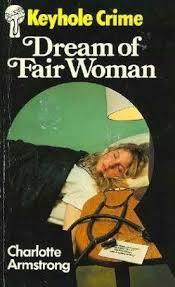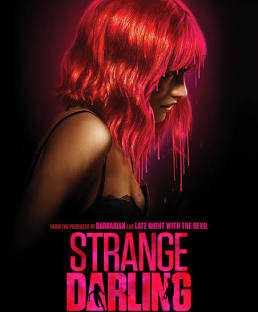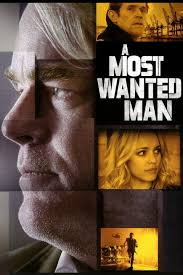Martin Edwards's Blog
September 5, 2025
Forgotten Book - Be Shot for Sixpence

I have a vivid memory of reading Michael Gilbert's Be Shot for Sixpence (1956) for the first time. It was on a 'snow day', one of only two or three during the whole of my schooldays, when the snow in Northwich was too heavy to get to school. Because my parents were out at work themselves, I spent most of the day with friends, a brother and sister whose parents ran a corner shop across the road. But I was left to my own devices for some of the time, so I read Gilbert's book. I liked it, and one or two bits have stuck in my memory, but overall I didn't think it was as good as some Gilberts I'd read previously. Having now acquired a signed copy, I thought it was time to read it again and see what my revised verdict might be.
I don't think I realised at the tender age of thirteen or so that the 'Michael' who appears on page one was actually a jokey version of Michael Gilbert himself. But the narrator is his cousin, a chap called Philip, whose surname is never revealed (makes a change from those detectives whose first name is a closely guarded secret). Philip is courageous, and seems to have some links with the Intelligence Service, but he's also impulsive and abrasive and has a way with women which wouldn't go down too well nowadays. To be honest, I didn't find him quite as admirable as I think Gilbert intended him to be.
Philip comes across an enigmatic ad. in The Times from an old school friend called Colin, who has disappeared in mysterious circumstances, and soon finds himself - against advice and, arguably, common sense - travelling to Europe to try to track Colin down. He finds himself involved in central European politics, with curious goings-on behind the Iron Curtain.
There's a lot to enjoy in this book, as usual with Gilbert's smoothly told stories. Given that the book seems to have been written before the Hungarian Uprising of 1956, it also seems quite prescient. There are some good action scenes, although as is not unusual with Gilbert's thrillers, the climax to the story is somewhat muted. More than half a century after I first read this book, I still like it - but with reservations.
September 3, 2025
A Signing Marathon, BBC History and Shedunnit podcasts, and a LoveReading review

Last week I had the fascinating experience of signing in excess of one thousand special copies of Miss Winter in the Library with a Knife - by far the biggest signing I've ever undertaken in one go. These books are destined for independent UK bookshops and the production values are terrific, with great endpapers and lovely sprayed edges. The marathon signing took place at the huge hi-tech Hachette warehouse in Didcot, an extraordinary enterprise which handles a couple of million books a week.

There is a noticeboard bearing photos of authors who have done signings there - including three members of the Detection Club, I saw - as well as a 'leader board' recording the speediest authors when it comes to signing. I didn't aim for speed because I wanted the signatures to be nicer than a mere scrawl. And the signing was the perfect opportunity for me to use a very special pen for the first time.

This is the Conway Stewart Detection Club pen - a limited edition, mine is #1, and was a lovely birthday present from Mrs Edwards - and it bears the names of all the Presidents of the Club as well as the founder members. So it was quite an occasion and I really enjoyed the whole experience.
I've done a podcast about crime fiction with BBC History and you can listen to it via these links:
Apple Podcasts: https://podcasts.apple.com/gb/podcast/history-extra-podcast/id256580326?i=1000724036418
Spotify: https://open.spotify.com/episode/2X0aergy9rnj7YGskVT0DW?si=b4096367fe054a21
HistoryExtra website (subscription needed): https://www.historyextra.com/membership/crime-fiction-history-podcast-martin-edwards/I've also done a podcast about Cluefinders for Shedunnit, the great show hosted by Caroline Crampton, and you can listen to it here: https://www.shedunnitshow.com/theclue...
I'm looking forward to next week's launch of the book and in the meantime I'm delighted that the novel has just received a 'Star Review' from LoveReading. This is what they have to say:
'So, so wonderfully entertaining! Over the Christmas period, six members of staff from the Midwinter Trust, host and challenge six people linked to the literary crime world, to solve the murder of a fictional crime writer. Award-winning author Martin Edwards has oh-so successfully turned his masterly hand to his first festive mystery. Step right if you are an avid armchair sleuth, as you really can catch the clues here and try to solve them as you read. From the rules of the game, to the invitation, a player’s journal, letters, news articles, and maps, there is a whole host of information, as well as the novel itself to tune into and become absorbed by. I stuck by the strategy tip within the first few pages, and crowed with delight whenever my hunches played out, I will admit to missing certain clues too! This is effectively a locked room mystery, as the Midwinter Trust hamlet is snowed in, and the sense of place is immense. The characters stamp themselves onto the page, I got to know all twelve of them quickly, and didn’t have to stop to check who was who as I was reading. The plot itself is fabulously twisty, and I loved how it evolved as I read. The inclusion of the Cluefinder at the end of the novel was most sporting! This will make a super gift for a crime-fiction lover, and joins our LoveReading Star Books. Vivid and compelling, Miss Winter in the Library with a Knife is an absolute blast of a Christmas mystery, highly recommended.'
September 1, 2025
Back from Bordeaux

I've had a hectic few days since getting back from a lovely river cruise around the wine region of Bordeaux (which is where I took this photo - a sight that really appealed to me!) Amongst other things, I just about managed to send out my August newsletter by the skin of my teeth before August became September! If you'd like to sign up, you can do so here: https://substack.com/@martinedwardsbo... And rest assured, it is completely free.

I'd been working hard on my new book (the sixth Rachel Savernake novel) as well as one or two other projects before we flew off to France, so the week-long break came at just the right time. We didn't travel too far in terms of miles, but the trip certainly felt restorative - before the holiday was over, I was getting more ideas for stories as well as for the work-in-progress. I also read three enjoyable books, which earn a mention in the newsletter.




This was the second time this year that I've been to Bordeaux, and it's a city that grows on me with each visit. We went to a couple of museums as well as a very good botanical garden and the cathedral. And the stops along the route each had distinct charm. There were, of course, wine tastings, and so much good food on board that I shall need to ease off the eating for another week or two to get back in trim. But it was worth it.





I really liked St Emilion, a gorgeous town, but other less renowned places like Cadillac, Libourne, Bourg, and Blaye all had something to recommend them. Out travel companions were Kate Ellis and her husband Roger. And the four of us won a quiz: here's a photo of us with our winnings!


August 29, 2025
Forgotten Book - The Hanging Woman

The Hanging Woman, first published in 1931, is a relatively elusive John Rhode title, and I'm lucky to have tracked down and acquired the Detection Club's own signed copy (the US edition, the cover of which is shown above). And this obscurity is unfortunate, because I found it was one of the most engrossing Rhodes that I've encountered. This is partly because Dr Priestley plays a more active and significant role in the story than is often the case, especially in Rhode's later books. It's also partly because there is some interesting discussion of the importance of scientific experiment, a subject on which Priestley holds characteristically strong views.
The story begins in an interesting way, with an inquest into the death, in a plane crash, of a Belgian pilot who worked for a scientist called Dr Partington. It seems like a clear case of accident, albeit an inexplicable one, but shortly afterwards a woman is found dead in a deserted country house not far away and it emerges that there was some kind of connection between her and the pilot.
The woman was found hanging in circumstances similar to those in which, ten years earlier, a servant girl killed herself in the house. It seems that history may have repeated itself, and that the deceased took her own life, but Hanslet of the Yard becomes involved with the case, and he soon forms a theory of his own. With almost charming naivete, he is keen to run it past Dr Priestley, who - as usual - is not convinced.
John Rhode rarely offers a wide choice of murder suspects in his books. With him, the focus is often on the 'how', at least as much as on the 'who'. Here, though, despite the paucity of suspects, I felt he juggled the different possibilities more effectively than in some of Dr Priestley's other cases. There is a bit of stuff about alibis and train times that is a bit routine, but overall I'd say this is a superior example of John Rhode's writing.
August 25, 2025
Reflections on Murder: Selected Short Stories of Nedra Tyre

As I've mentioned several times before, Stark House Press are an American small press who, like Crippen & Landru and several others, do sterling work in reissuing more or less forgotten mysteries. Today I want to mention a Stark House Press book that was first published as recently as 2024 and which collects some work by a writer I've long admired, Nedra Tyre.
Reflections on Murder: Selected Short Stories of Nedra Tyre, is edited and introduced by Bill Kelly. His introduction is helpful and informative, setting the sixteen stories - written between 1955 and 1978 - in context, especially with regard to the author's years spent working in social services. Her understanding of the impulses that drive ordinary people to commit crime came, at least in part, from time she'd spent talking to such people and trying to help them.
I first came across the name of Nedra Tyre many years ago in the pages of that excellent magazine Ellery Queen's Mystery Magazine, and I recall being greatly impressed by 'A Nice Place to Stay', which is included here. But until now I've only been able to find a handful of her stories. There is further good news, however, in that Stark House Press have reissued some of her novels and I hope to review Hall of Death on this blog before too long.
It's obvious from several of these stories, including the title story, that Nedra Tyre was an enthusiastic reader of detective fiction. She was quite skilled at plotting, but time and again in reading these stories, what lingers in the memory is the characterisation. She was working at much the same time as better-known writers such as Charlotte Armstrong (and, in Britain, Celia Fremlin) but she too deserves to be read and this collection is most welcome.
August 22, 2025
Forgotten Book - Dream of Fair Woman

I've discussed several books by Charlotte Armstrong on this blog over the past eight years or so. Armstrong (1905-69) was an Edgar-winning suspense novelist whose books often had strongly visual ingredients, making them popular sources for film and TV adaptation. My favourite of her books is Mischief, which is relatively straightforward, but genuinely gripping.
Armstrong had a number of other strengths as a writer. She didn't repeat herself - all the books of hers that I've read are very different from each other, and they often have intriguing ideas at their heart. And she had the knack of using her stories to make interesting social points. She took risks as a writer, and I find that admirable. Unfortunately, if perhaps inevitably, those risks didn't always come off.
Dream of Fair Woman is, I think, a case in point. The book was originally published in 1966, towards the end of her career, although the copy I read was (like some of her other books) published in the interesting paperback reprint line Keyhole Crime, which flourished for a while in the early 1980s without ever really establishing a distinct identity, perhaps because the choice of authors and titles was so curiously random.
The story begins with an intriguing premise. A mysterious but very attractive young woman rents a room with Peg Cuneen, but she is clearly unwell and soon finishes up in hospital in a coma. Who is she? This is the question that confronts Peg's son Matt and young Betty Prentiss. Betty fancies Matt, but he pays her less attention than she deserves, being fascinated by the woman in the coma who never speaks. Eventually it becomes clear that Armstrong has some interesting points to make about the role of women in society, including the way that women may be taken for granted by men.
The trouble is that the plot - which involves identical sisters - is fairly barmy, and I began to lose interest early on. I got the impression that Armstrong had a good central idea for a book, but found it difficult to structure the material satisfactorily. And that meant that I cared about the characters much less than I should have done.
August 20, 2025
Reversal of Fortune - 1990 film review

When Claus von Bulow died six years ago, the BBC report about his passing carried the headline: 'Socialite cleared of trying to murder his wife dies aged 92'. Well, 92 is a good innings in terms of longevity, but that isn't the greatest of epitaphs. The term 'socialite' (a common description of von Bulow) seems to me to be freighted with negative implications, and there's no doubt that his trial is what almost everyone, including me, remembers about him.
Only now, though, have I caught up with the film about the von Bulow case, Reversal of Fortune, which dates from 1990. Jeremy Irons won an Oscar for his performance as von Bulow, while Glenn Close played his wife Sunny. Sunny's real name was Martha, and in the light of what happened, the name Sunny seems tragically inapt. She was another socialite, immensely wealthy, but deeply unhappy and apparently fuelled by drink and drugs. The rich are different, for sure, but sometimes not in a good way.
The film is based on shocking events, and it's really a stranger-than-fiction story. Sunny was found at home in a diabetic coma in December 1980. A year earlier, she'd been revived after falling into another coma. At first it seemed like a domestic tragedy, sad but relatively straightforward. However, suspicions were aroused about her husband Claus, who was, to say the least, a strange individual. He was found guilty of attempted murder and hired the lawyer and academic Alan Dershowitz for the (ultimately successful) appeal. The film is based on Dershowitz's book; he is played - very well, I think - by Ron Silver.
I found the way that Dershowitz and his team were portrayed to be slightly comical; they kept announcing to each other great breakthroughs that would surely have been fairly obvious in reality. The process certainly bore no resemblance to the work of any legal team I've ever encountered, but then again, I've never had any involvement with the American criminal justice system - thankfully.
I've always found the story of what happened to Sunny von Bulow to be both sad and extraordinary. She remained in a vegetative state for almost 28 years, which seems unimaginably terrible and that's the main reason I haven't watched the film before now. I've no idea what the precise truth about the incidents that led to her death was, of course. But for all the brilliance of Jeremy Irons' portrayal of the man, I'm glad I never met Claus von Bulow.
August 18, 2025
Strange Darling - 2023 film review

I'm not absolutely sure what to make of Strange Darling - a 2023 film that has received excellent reviews - although I do think the title is quite appropriate. To some extent, this is because it's a film which uses non-linear chronology, and I'm tempted to take another look at to see if I missed something the first time around (although, given that I anticipated the key plot twist, perhaps I didn't...)
The story is told in six chapters, plus an epilogue, and we are presented with the material in this order: chapters 3, 5, 1, 4, 2, 6 (and then the epilogue). It's a pretty good way of telling a story if you get it right, and arguably the writer-director JT Mollner does get it right. The only member of the cast I'd seen in anything previously was Barbara Hershey, who plays an ageing hippie very convincingly. However, the acting throughout is of a high standard.
This is especially true of Willa Fitzgerald, who is compelling in a role that is extremely challenging. She plays 'the Lady', a sexy but mysterious and perhaps deeply troubled young woman, while Kyle Gallner is quite menacing as a character known as 'the Demon'. I'm surprised to have read that film executives thought about replacing Fitzgerald and having the story told in a conventional, linear way, because if they'd done so, they would have sacrificed the film's strongest ingredients.
So there is plenty to admire in Strange Darling. Yet there were moments of graphic violence that didn't appeal to me one bit, and I felt that the ingenious structure masked a certain lack of subtlety in the writing. On the whole, though, I think this is a good film, even if it has been over-praised. And Willa Fitzgerald is excellent, an actor of real potential.
August 15, 2025
Forgotten Book - Invisible Green

John Sladek's brief but brilliant career as a writer of locked room mysteries came to an end with Invisible Green (1977). in which his Great Detective, an American living in London called Thackeray Phin, made a triumphant return after his successes in Black Aura. Apparently Sladek didn't make enough money for writing more books of this kind to be worthwhile - a real shame.
With this book, he moved publisher from Jonathan Cape, who published Black Aura, to Victor Gollancz. The front cover of the first edition bore a typical Gollancz summary: 'A real, classical detective story that might have been written in the ingenious days of the last century, or of the first quarter of this, with an amateur detective from the same mould, but a puzzle to tax the most up-to-date minds'. And this is all perfectly true.
The book begins with a Prologue set in August 1939 and featuring a group of mystery fans with the pleasing name of the Seven Unravellers. We then move forward to the present with one member of the group, Dorothea Pharaoh, planning to organise a reunion of the seven keen puzzle-solvers. When she is confronted by a troubling problem, she calls on Phin - with whom she has been playing postal chess - to help.
There are some genuinely funny moments in this story, as well as some neat mysteries to fathom. We never learn much about Phin (where does his money come from? I kept wondering) but the story moves at a brisk pace and intrigues from start to finish, and although I did figure out the culprit in good time, some aspects of the solution eluded me. Very good light entertainment and a book that deserves to be back in print.
August 13, 2025
A Most Wanted Man - 2014 film

A Most Wanted Man is a film from 2014 based on a novel published by John le Carre eight years earlier. I haven't read the book, but apparently it is at least in part a critique of the American policy of 'extraordinary rendition'. This aspect of the story is present in the film but somewhat downplayed, and in fact it is overall quite a low-key movie, although one that has won quite a few admirers as well as one or two less favourable reactions.
The stand-out element of the film is undoubtedly the central performance, by Philip Seymour Hoffman, in what turned out, sadly, to be his last major role before his untimely death aged 46. Hoffman plays Gunther Bachman, who runs a covert German intelligence unit, and I think that - even though he wasn't the obvious person to cast as a German spy - he is convincing, because of the humanity his nuanced performance brings to the role.
The story is about Issa Karpov, a refugee from Chechnya, who arrives illegally in Germany and is helped by an idealistic immigration lawyer, well played by Rachel McAdams. Bachman is leading an investigation into a Muslim philanthropist who is suspected of channelling money to a terrorist organisation and when it turns out that Karpov is entitled to a vast amount of money held in a German bank, Hoffman persuades the banker Tommy Brue (William Dafoe, who is always good to watch) to help him snare the bad guy. But of course, in the grubby world of espionage, especially as presented by le Carre, we can always expect there to be luckless casualties of double-dealing.
I watched this film shortly after watching The Bourne Identity for the second time, and it certainly lacks the excitement of many a more straightforward thriller. It takes an age for the story to click into gear, and I feel that the script - although certainly competent - could have been pacier. However, the later stages of the film are gripping, and in any event it's worth watching for Hoffman alone.



